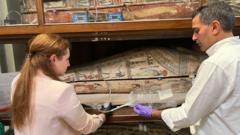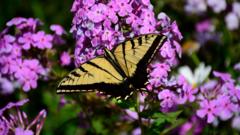A recent study reveals that after 5,000 years, mummies from ancient Egypt still exude pleasant odors, offering new perspectives on historical mummification practices and museum conservation.**
Ancient Mummies Unveil Pleasant Aromas: A New Perspective on Egyptian History**

Ancient Mummies Unveil Pleasant Aromas: A New Perspective on Egyptian History**
Researchers find ancient Egyptian mummies emit sweet, woody, and spicy scents, revealing fascinating insights into mummification practices.**
Researchers have uncovered the surprising fact that ancient Egyptian mummies, even after 5,000 years entombed in sarcophagi, emanate pleasant scents. A team examining nine mummies described their aromas as "woody," "spicy," and "sweet," marking a stark contrast to the horror often associated with mummified remains in popular culture. "Reconstructing these smells will allow others to experience what we encountered when we smelled the mummies," researcher Cecilia Bembibre explained in a recent BBC interview. The research aims to present these reconstructed scents in the Egyptian Museum in Cairo, enriching visitors’ understanding of mummification and the cultural importance of fragrant substances in ancient rituals.
Ancient Egyptians incorporated pleasant aromas in the mummification process as they believed these scents would protect and guide the spirit to the afterlife. Those of nobility and pharaohs were particularly adorned with oils, balms, and waxes during their embalming. Bembibre added, "It was surprising to find that these mummies smelled pleasant, contrary to our expectations."
The study, published in the Journal of the American Chemical Society, employed a non-invasive method where researchers inserted a tiny tube into the sarcophagus to extract scent samples without disturbing the mummies. The investigation revealed potential connections between the scents present and a mummy's social class, with the aromas indicating processes linked to decomposition—this could assist conservators in their efforts to preserve these ancient artifacts for future generations.
Ally Louks, an expert in the politics of smell, emphasized the significance of engaging multiple senses in historical education, stating that smells play a critical role in social and personal practices within ancient Egyptian culture. Meanwhile, Matija Strlič expressed excitement about the implications of their findings for other museum collections, noting the potential for developing new conservation techniques powered by environmental scent analysis. This innovative work could profoundly influence how we approach, understand, and interact with historical artifacts in both academic and public spheres.
Ancient Egyptians incorporated pleasant aromas in the mummification process as they believed these scents would protect and guide the spirit to the afterlife. Those of nobility and pharaohs were particularly adorned with oils, balms, and waxes during their embalming. Bembibre added, "It was surprising to find that these mummies smelled pleasant, contrary to our expectations."
The study, published in the Journal of the American Chemical Society, employed a non-invasive method where researchers inserted a tiny tube into the sarcophagus to extract scent samples without disturbing the mummies. The investigation revealed potential connections between the scents present and a mummy's social class, with the aromas indicating processes linked to decomposition—this could assist conservators in their efforts to preserve these ancient artifacts for future generations.
Ally Louks, an expert in the politics of smell, emphasized the significance of engaging multiple senses in historical education, stating that smells play a critical role in social and personal practices within ancient Egyptian culture. Meanwhile, Matija Strlič expressed excitement about the implications of their findings for other museum collections, noting the potential for developing new conservation techniques powered by environmental scent analysis. This innovative work could profoundly influence how we approach, understand, and interact with historical artifacts in both academic and public spheres.























